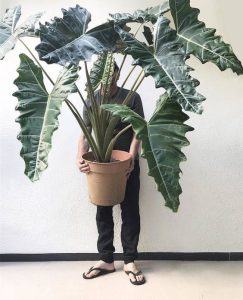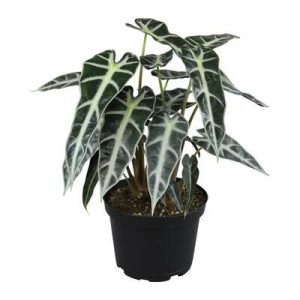- English
- Chinese
- French
- German
- Portuguese
- Spanish
- Russian
- Japanese
- Korean
- Arabic
- Irish
- Greek
- Turkish
- Italian
- Danish
- Romanian
- Indonesian
- Czech
- Afrikaans
- Swedish
- Polish
- Basque
- Catalan
- Esperanto
- Hindi
- Lao
- Albanian
- Amharic
- Armenian
- Azerbaijani
- Belarusian
- Bengali
- Bosnian
- Bulgarian
- Cebuano
- Chichewa
- Corsican
- Croatian
- Dutch
- Estonian
- Filipino
- Finnish
- Frisian
- Galician
- Georgian
- Gujarati
- Haitian
- Hausa
- Hawaiian
- Hebrew
- Hmong
- Hungarian
- Icelandic
- Javanese
- Kannada
- Kazakh
- Khmer
- Kurdish
- Kyrgyz
- Latin
- Latvian
- Lithuanian
- Luxembou..
- Macedonian
- Malagasy
- Malay
- Malayalam
- Maltese
- Maori
- Marathi
- Mongolian
- Burmese
- Nepali
- Norwegian
- Pashto
- Persian
- Punjabi
- Serbian
- Sesotho
- Sinhala
- Slovak
- Slovenian
- Somali
- Samoan
- Scots Gaelic
- Shona
- Sindhi
- Sundanese
- Swahili
- Tajik
- Tamil
- Telugu
- Thai
- Ukrainian
- Urdu
- Uzbek
- Vietnamese
- Welsh
- Xhosa
- Yiddish
- Yoruba
- Zulu
- Kinyarwanda
- Tatar
- Oriya
- Turkmen
- Uyghur

Anyị ga-ekwu maka ihe ọkụkụ na-eto n'okpuru nnukwu osisi taa. Mpempe akwụkwọ ya dị nnọọ ọhụrụ na akwụkwọ ya nnukwu ihe na-awụ akpata oyi. Osisi a hụrụ n'anya ka ọ too n'okpuru mkpuchi nke osisi ndị ọzọ; Ọ na-atọ ụtọ okpomọkụ na elu iru mmiri gburugburu ma na-akpọkarị anwụ na-acha. Nke a bụ Alocasia. Ewezuga ya nnukwu akwụkwọ ya, osisi a na-adọrọ adọrọ n'ihi ike mgbanwe na ọ mara mma n'ọtụtụ gburugburu ebe obibi. Ọgaranya na ihe atụ ọdịbendị na uru dị mma, Calla Lily, na-akpọkarị Guipp gupping guipping, Tanhe, Tianle, wdg.

Alocasia Calidora
Alocasia’s plant features
Large evergreen plant Arum lily is from the Arum genus in the Araceae family. Broad and thick, its leaves reveal a distinctive green shine and radiate a natural environment. Calla lily leaves vary in form; some are oval, others are heart-shaped, some are arrow-shaped. The leaves vary in size; the smallest is less than ten centimeters, the biggest may reach more than one meter. The leaves’ crisp lines on their margins radiate a special appeal. Furthermore, the distinctive veins and marks on the leaves provide every leaf of calla lily like a great piece of art.
Likewise striking are the calla lily’s blossoms. White, pink, purple, etc. are among the hues; the blooms are funnel-shaped or tubular. Though its blossoming season is not set, calla lily may bloom all year long given appropriate growth circumstances. Strong floral scent helps individuals feel well and at ease. Apart from its decorative appeal, the rhizome of calla lily has some therapeutic worth. Though its juice is poisonous and should be handled carefully, it may be used to cure conditions like hernia, cholera, and stomach ache.
Alocasia’s cultivation needs
Itolite na oke okpomọkụ na ọnọdụ iru mmiri dị elu maka arum lily. Ọ bụ ezie na ọ dịghị mma maka ikpughe ìhè ọkụ, ọ bụ ndo. Nke a na-akpata Lily na-etolitekarị osisi ma ọ bụ osisi banana na mpaghara mmiri na mpaghara ebe okpomọkụ, Guangyi, Guizhou, Yunnan na ọnọdụ ndị ọzọ na China. Calla Lily nwere ihe niile maka mmepe maka mmepe. Ọ bụ ihe dabara adaba maka oke ikuku, enweghị ike ịnagide, ma na-anụ ụtọ okpomọkụ na iru mmiri. Ya mere, ilebara anya na nlebara anya na usoro na-eto eto na-ekwe nkwa na Calra Lily nwere ike ịmalite ngwa ngwa n'ọnọdụ ndị kwesịrị ekwesị.
Nnukwu ite na-enye gị ohere ịkụnye oku lili na nke ọ bụghị naanị na-enye ha ọnụ ụlọ zuru ezu kamakwa ebe obibi obodo ha. Calla lili na-eto ngwa ngwa ma nwee ụdị osisi dị ịtụnanya; N'ihi ya, ma ha toro n'ime ma ọ bụ n'ogige ahụ, a ga-ahapụ mpaghara ezuru ezu maka mmepe na nlele. Ọ bụ ihe amamihe dị na ya ịhọrọ ala kwesịrị ekwesị na akpa na-ekesa ya na mgbasa ikuku dị ka Calla lili nwere usoro mgbọrọgwụ nke ọma ma na-agbasa rhizomes na-akpụ akpụ na-akpụ akpụ rhizomes ngwa ngwa.
Uru ornamental na ngwa uru Calla lili
Because of their attractive look and great flexibility, calli lilies are often utilized in landscape and inside decorating. Calla lilies’ big, lustrous, plump, spherical leaves as a foliage plant evoke stretching and energy for humans. Apart from enhancing the surroundings, it raises the pace of urban greenering and enhances the microclimate. Alocasia used in landscaping not only helps to reduce air dust and raise groundwater levels but also stops soil erosion and improves the ecological advantages of greening.
A na-arụkarị ọrụ dị ka nnukwu osisi na-acha akwụkwọ ndụ ma ọ bụ na-acha akwụkwọ ndụ na ime ụlọ, ya mere na-agbakwunye ihe okpomọkụ na mpaghara ahụ. Uru ihe nlere di iche iche sitere na ya weputa agwa herbaceous na oké, dị mfe ị ga. Calla Lili nwere ike inye nsogbu dị iche iche dị iche iche ma ọ bụ naanị ya ma ọ bụ gwakọta ya na osisi ndị ọzọ na ụlọ ndị ọzọ. Kariri mpaghara ọha, azụmaahịa, ma ọ bụ n'ogige nkeonwe, Calla Lili nwere ike ime ka echiche niile dị ọhụụ na ogo gburugburu.
Alocasia’ upkeep and maintenance
Ọ bụ ezie na ọnarị Calla chọrọ obere obere mmezi na nlekọta, ọ dị mkpa ka a pụta ìhè. Calla lili bụ nke mbụ mgbanwe na-agbanwe agbanwe ma nwee ike ịlanarị na iru mmiri, okpomọkụ dị elu ma na-enwe gburugburu na-emebi emebi. Inggba mmiri na fatịlaịza dị mkpa iji dozie ọnọdụ mmepe ya dị mma. Calla lily na-acha odo odo nwere ike edo edo n'oge oyi. Ihicha akwụkwọ odo na-acha odo odo n'oge a ga - enyere aka ịnọgide na ahụike na ịdị ọcha nke osisi.
Ọ bụ ezie na Calla lili nwere ọrịa na-adịghị ala na ụmụ ahụhụ, ọtụtụ nsogbu ndị a na-ahụkarị ka a na-enwekarị na mmepe ahụ. Kwesịrị stains ma ọ bụ ụmụ ahụhụ na-apụta na akwụkwọ, a ga-ekwurịrị ngwa ngwa. Iji mee ka lili dị ọcha, a na-adụ ya ọdụ ka izere iji ndị na-ehicha kemịkal iji gbochie na-emerụ sheen ha ma jiri akwa nhicha mmiri na-eme ka epupụta. Calla lili nwere nke ọma na usoro mgbọrọgwụ dị mma; Yabụ, na-ata ala ala dị mkpa iji zere mmiri na-eme ka mmiri na-emerụ osisi.

Alocasia
Alocasia abụwo otu nhọrọ dị na ọtụtụ ọdịbendị na mma maka ụdị ndị a na-adịghị ahụkebe na ezigbo mma. Na ụdị gburugburu ebe obibi niile, akwụkwọ ya buru ibu na akwụkwọ ndụ akwụkwọ ndụ na-adịghị ahụkebe na-enwupụta ike ịma mma. Alocasia O nwere ọtụtụ ihe - na usoro nke ọgwụ yana osisi na-agba akwụkwọ. Knowingmara mkpa nlekọta, ihe ornamental na-eji, na ọnọdụ na-eto eto na-enwe ga-enyere anyị aka iji uru osisi a dị ebube. Calla lolis nwere ike ịchọ mma ma mee ka ọnọdụ anyị dị ndụ ma mee ka ọ ghara ịdị ndụ ma tolite n'ogige ụlọ ma ọ bụ dị ka ụda akwụkwọ ndụ akwụkwọ ndụ maka azụmahịa.
Previous News
Calathea Gekko plants are suitable for home car...Next News
Chinese na-eme ihe na-eme ihe na-egbu egbu


